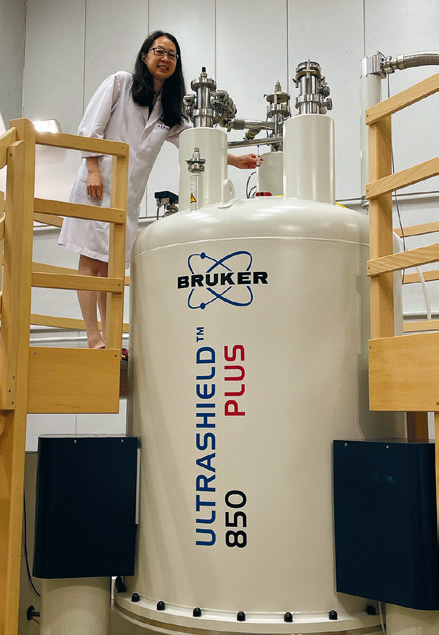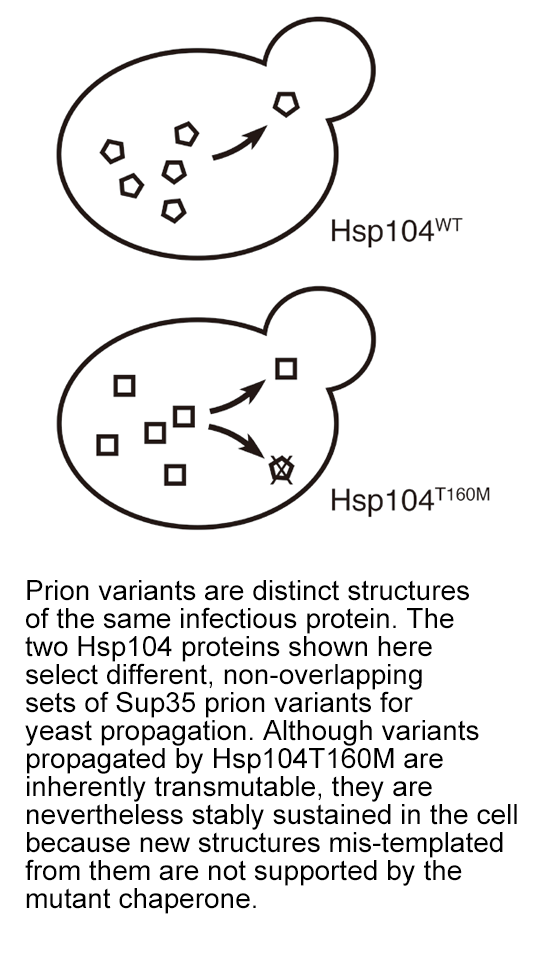Biology of Prions and Amyloids
How do “protein-only” prions achieve strain variations? And what is the use of a prion? These are some of the questions we would like to answer.
We have demonstrated that strains of the yeast prion [PSI] are differently folded amyloid fibers of the same Sup35 protein. Amyloid is associated with many human neurodegenerative diseases, including the Alzheimer’s disease and the Huntington’s disease. In these conditions, distinct proteins are observed to aggregate and adopt a common cross-β conformation, with β-strands lying perpendicular to the fiber axis. In the case of [PSI], more than 30 different strains of the wild-type Sup35 protein were isolated in our laboratory. Structural characterizations are carried out to understand how the different strains can faithfully selfmaintain in spite of sharing the cross-β architecture. While prions are amyloid, the converse is not always true. Complex interplays between amyloid conformations and appropriate cellular co-factors determine whether an amyloid structure can propagate as a prion inside cells. We are creating artificial cellular environments in yeast to elucidate these intricate interactions. The knowledge gained may help explain why β-amyloid and tau filaments spread along predictable cell paths in the brain of Alzheimer’s patients.
Some filamentous fungi use prions to discriminate self from non-self. We are very interested in discovering new prions and elucidating their roles in cellular control. We will also exploit prions to engineer novel activities in a cell. This line of research could lead to novel biotechnological applications.
- PDF, 1998-2004, Florida State University, USA
- PDF, 1995-1998, ETH Zurich, Switzerland
- Ph.D., 1995, Biophysics, Harvard Univ., USA
- BS, 1986, Physics, National Taiwan Univ.
- 2009, Academia Sinica Early-Career Investigator Research Achievement Award
- 2010-2014, Academia Sinica Career Development Award
- Yu, C.I., King, C.Y. (2019) Forms and abundance of chaperone proteins influence yeast prion variant competition. Molecular Microbiology 111: 798-810.
- Huang, Y.W., King, C.Y. (2020) A complete catalog of wild-type Sup35 prion variants and their protein-only propagation. Current Genetics 66: 97-122.
- Huang, Y.W., Kushnirov, V.V., King, C.Y. (2020) Mutable yeast prion variants are stabilized by a defective Hsp104 chaperone. Molecular Microbiology115(4):774-788.


